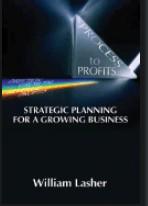
4. (30 Marks Total) For a 3-year term insurance on (50), you are given: (i) The death benefit is $150,000. (ii) The death benefit is payable at the moment of death. (iii) The annual gross premium is G , payable annually in advance. (iv) Expenses prior to issue are $1000 and 50% of premium and are paid at time 0. (v) Expenses for years after the first are $100 and 2% of premium payable immediately after the receipt of each gross premium. (vi) Settlement expenses are $750 paid at the moment of death. (vii) The model includes lapses, but there are no cash values payable on lapse. Lapses occur at the end of the year and deaths are uniformly distributed throughout the year. (viii) There are reserves at time 1 and 2. (ix) The annual effective rate of interest is 8.00% in all periods. The cash flow/profit table as a function of the premium G is as given below (with BOY and EOY expense values missing). This profit table is per starting individual (i.e. the profit signature). time Premium Death Benefits Paid BOY EOY Expenses Expenses Interest 0 Increase in Reserves $0.00 -$146.27 $83.93 $230.20 1 2 G -$779.62 0.9751G -$912.24 0.9208G-$1,005.00 0.08G 3.91+0.0764G 11.05+0.07226 3 a) Fill in the BOY and EOY Expenses columns as a function of the premium G. Answers must be written in the pink answer book provided. (10 Marks) b) Calculate the profit signature as a function of the premium G for times 0 to 3 (inclusive). (10 Marks) c) Calculate the premium that needs to be charged given a 15% annual effective hurdle rate. (10 Marks) 4. (30 Marks Total) For a 3-year term insurance on (50), you are given: (i) The death benefit is $150,000. (ii) The death benefit is payable at the moment of death. (iii) The annual gross premium is G , payable annually in advance. (iv) Expenses prior to issue are $1000 and 50% of premium and are paid at time 0. (v) Expenses for years after the first are $100 and 2% of premium payable immediately after the receipt of each gross premium. (vi) Settlement expenses are $750 paid at the moment of death. (vii) The model includes lapses, but there are no cash values payable on lapse. Lapses occur at the end of the year and deaths are uniformly distributed throughout the year. (viii) There are reserves at time 1 and 2. (ix) The annual effective rate of interest is 8.00% in all periods. The cash flow/profit table as a function of the premium G is as given below (with BOY and EOY expense values missing). This profit table is per starting individual (i.e. the profit signature). time Premium Death Benefits Paid BOY EOY Expenses Expenses Interest 0 Increase in Reserves $0.00 -$146.27 $83.93 $230.20 1 2 G -$779.62 0.9751G -$912.24 0.9208G-$1,005.00 0.08G 3.91+0.0764G 11.05+0.07226 3 a) Fill in the BOY and EOY Expenses columns as a function of the premium G. Answers must be written in the pink answer book provided. (10 Marks) b) Calculate the profit signature as a function of the premium G for times 0 to 3 (inclusive). (10 Marks) c) Calculate the premium that needs to be charged given a 15% annual effective hurdle rate. (10 Marks)







